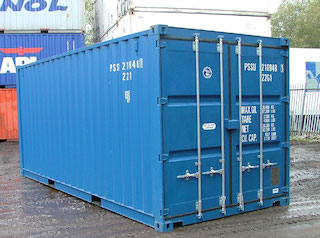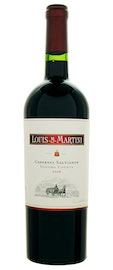Tortured Wine - Tips to Avoid Heat Damage
/Most wine once purchased is consumed within 24 hours. Once you’re walking out of the retail store with your wine treasures in hand what’s the best way to protect your investment until you consume it? What are some signs that your wine may be heat damaged? What does heat damaged wine look and taste like? In this pod cast we’ll answer these questions and offer some tips on how to take care of your wines so that they can show their best when you’re ready to enjoy them.
Unless you’re a big time collector or wine investor who will be storing wines for many years you don’t have to obsess over wine storage. Treasury Wine Estate recently dumped 33 million dollars worth of wine (1/2 million cases) that was past its prime. Clearly they will sell no wine past its prime. Jokes aside it’s important to remember that all wines have a shelf life unlike distilled spirits that can last indefinitely because of the high amounts of alcohol they contain. The minute most wines leave the producers care they can become subjected to less than ideal transport and storage conditions. Unless you’re in the unique position to buy directly from the winery there isn’t much you can do to ensure that your wine is treated properly before your buy it, but there are steps you can take to care for your wine once it’s in your possession. Becca offers a fine article if you want to geek out on the damaging effects of heat exposure on wine.
We decided to conduct an experiment in an effort to show what could happen to your wine if it is exposed to extreme temperature variations and high heat for an extended period of time. Our test subjects were two bottles of 2011 Louis M. Martini Cabernet Sauvignon Sonoma County. You can purchase this wine at Costco for around $13. Martini’s Cabernet represents an excellent value and is true to type displaying black fruit, cassis, a deft use of oak, vanilla, spice and round smooth tannins. Conventional wisdom maintains that if you expose your wines to temperatures over 80 degrees for any period of time the wine will be ruined. For this experiment we left one bottle in the confines of my wine closet where the temperature is fairly constant and rarely exceeds 66 to 68 degrees, not the ideal conditions for wine but more than adequate for short term storage ( 1 to 5 years ) of wines suitable for extended aging. The other bottle we placed in the trunk of my daily commuter a BMW 2002. This car does not get the garage treatment at home or at the office so the wine was subjected to the best and worst of conditions that Northern California had to offer at the beginning of our summer. The bottle went into the trunk on 4/28/13 and was removed three months later on 7/27/13. While we had a relatively mild summer this year it’s fair to speculate that the temperature fluctuations that the bottle in the car trunk was exposed to were extreme. Diurnal temperature swings of forty degrees or more are the norm in Sonoma County and these swings were certainly magnified by the trunk space. As the surrounding air warms, the wine and the air in the bottle warms up and expands. The Achilles heal in the container is the cork. The cork gets pushed upwards or the wine/ air seep up through the gap between the cork and the glass. The excessive expansion and contraction of the wine/air draws air through the cork and hastens oxidation. Our trunk bottle clearly showed the visual effects of heat damage with a protruding or pushed cork. Miraculously the tin foil was able to keep the bottle from popping its cork. We removed the tortured Cabernet and allowed it to rest in a cool dark place for several months before we opened both wines to do a side by side comparison. Check out the pod cast to find out how our tortured bottle of wine faired.
Here are seven tips to ensure that your wine purchases show their best side.
- Don’t store your wines in the kitchen above the stove, on top of the refrigerator or near windows. Wines should be stored in a cool, dark, vibration free area.
- Don’t store your wines in the refrigerator for long periods of time/ three or more weeks. It dulls the flavors.
- Treat your wines just like you would treat your recently purchased perishable groceries. While transporting keep them in the air conditioned passenger seat not the trunk. If you’re traveling all day and making several stops take a cooler with ice packs to protect your wine from heat damage and cover them so they are not exposed to direct sunlight. Wine is packaged in dark bottles to protect it from the light. The suns ultra violet rays are bad for your eyes and they can also shorten the life of your wine. Consider making your wine stop the last stop of the day to minimize the wines exposure to elevated temperatures.
- Don’t buy wines that show a pushed cork or seepage on the capsule.
- Do allow your wine time to settle and recuperate when you receive wine that has traveled a long distance over several days. Sometimes wines that have just been bottled or have been shipped recently can seem out of balance and exhibit muted flavors (bottle shock/ bottle sickness). Your wine will show better if it’s allowed to rest in a dark cool place for a couple of week.
- Do store wines that have natural corks on their sides. Ask a clerk at any retailer for an extra wine box and make sure you get a box with the inserts in place. Turn that box on its side and you have a perfect short term storage vessel for your wine.
- Be happy if the retailer you’re purchasing from says they won’t ship your wine during the hot season. It’s safer to ship wines in the spring and fall.
We hope you enjoy the pod cast. Cheers!





